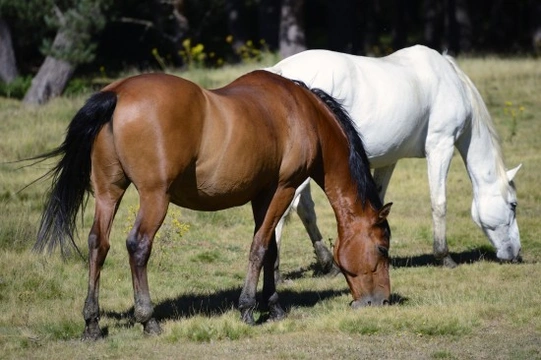
Retired Racehorses Can Achieve Great Things in Other Disciplines
Taking on a retired racehorse is not for everyone, but if you are an experienced rider and looking for a horse that is capable of going on to do certain equestrian disciplines, choosing the right ex-racer could be a very good move.
There are lots of ex-racehorses looking for new homes and although not all of them would be suitable to use other than as happy hacks, a lot of these great horses are more than capable of going on to prove themselves in other disciplines, but only if they are given the right sort of training.
Thoroughbreds tend to be a breed of their own. They are highly strung athletes and have had a pretty rough time early on in their lives because their racing careers start extremely early – some would say far too early! However, these horses are seriously multi-talented and can prove themselves in many other ways other than on a racetrack.
Ex-racers Go on to Compete in the Olympics!
Some of the best Olympic riders are proof that thoroughbreds that have come off the track can take a rider around some of the most testing courses in the world and on to win gold medals. The reason being that thoroughbreds are bred to “run” and have enormous courage and many of them literally boast “big” hearts.
Taking on a thoroughbred that has come “off the track” offers many people the chance to get involved in certain equestrian disciplines they would not otherwise be able to do because it is relatively inexpensive to purchase an ex-racehorse whereas buying a sport horse or other breed can make a huge dent in your bank balance.
However, not all thoroughbreds are suitable for eventing, dressage or other competitive disciplines because many of them end their careers due to some sort of injury. This means it is really important to have a thoroughbred vetted before you take them on if you are hoping to compete with them. If you're looking for a happy hack, this is a different ball game altogether.
Finding the Right Thoroughbred Takes Time
You need to do your homework when taking on an ex-racehorse which means finding out about their past and why they were retired from the track. You also need to know they are right for you because some of these high-spirited characters can be a real handful. You need to be sure you would be able to re-train them for the discipline you are hoping to compete in.
Age wise, most thoroughbreds finish their careers pretty young which can be anything from 3 to 6 years old and sometimes older, but sometimes even younger! Their careers start at the tender age of 2 or 3 years old, but the one constant is that most of these athletes boast nice natures and are usually very willing to please. This is just one of the reasons why they tend to be that much easier to re-train to compete in other equestrian disciplines which they often excel at.
Once a horse has been vetted and passed all the tests which includes finding out if they are clinically sound, that their respiratory systems are in good shape and their heart and lungs are okay, then you have the necessary reassurance they are in good enough health to go on to compete again, albeit in another discipline.
Where to Start Your Search
There are numerous charities and rehabilitation organisations that actively look to re-home ex-racehorses which are dotted around the country. A simple internet search will locate the nearest one to where you live. After that, all that's left to do is contact the centre before going along to meet the people who run them and a few of the thoroughbreds they have in their stables.
Some organisations ask for a donation which goes towards rescuing and looking after other thoroughbreds that come off the track. Others might sell their horses to interested parties, but be prepared to for a home check because most of these centres like to see where they send their ex-racers which is a very good thing.
What You Need to Know
It's important to have the full history of a horse you might be interested in so that you don't have any surprises further down the line. As previously mentioned, it's also a very good idea to have the horse vetted even if you choose a basic one.
Most Common Injuries
The most common injuries seen in ex-racehorses affects their tendons and ligaments although many also have joint issues more especially in their forelegs. Other injuries include the following:
- Joint problems in hind limbs
- Joint issues in their hocks, stifles
- Hip problems
- Back issues
Most soft tissue injuries can be overcome through rest and the right sort of treatment. Re-training has to be taken very slowly to allow the horse the time to not only adapt to a new discipline, but as way of ensuring the work that's asked of them does not impact any soft tissue damage that might already be present. Other things that need to be factored into their re-training include the horse's conformation and their temperament.
Conclusion
The key to finding the right thoroughbred to suit your riding style and needs, means taking your time and doing as much homework as you can before you commit to taking on an ex-racehorse. These horses are supreme athletes and some have rather spirited temperaments which not everyone can handle. You need to know the horse is sound and as injury-free as possible if you are hoping to compete with them, but you also need to know they are the right horse for you temperament-wise remembering that every horse is different!



